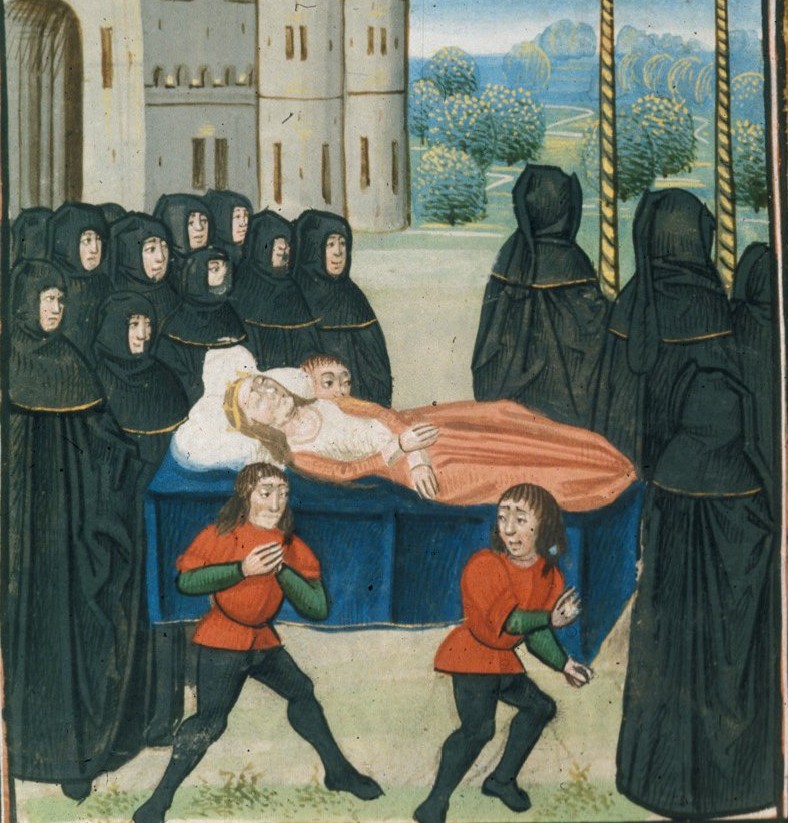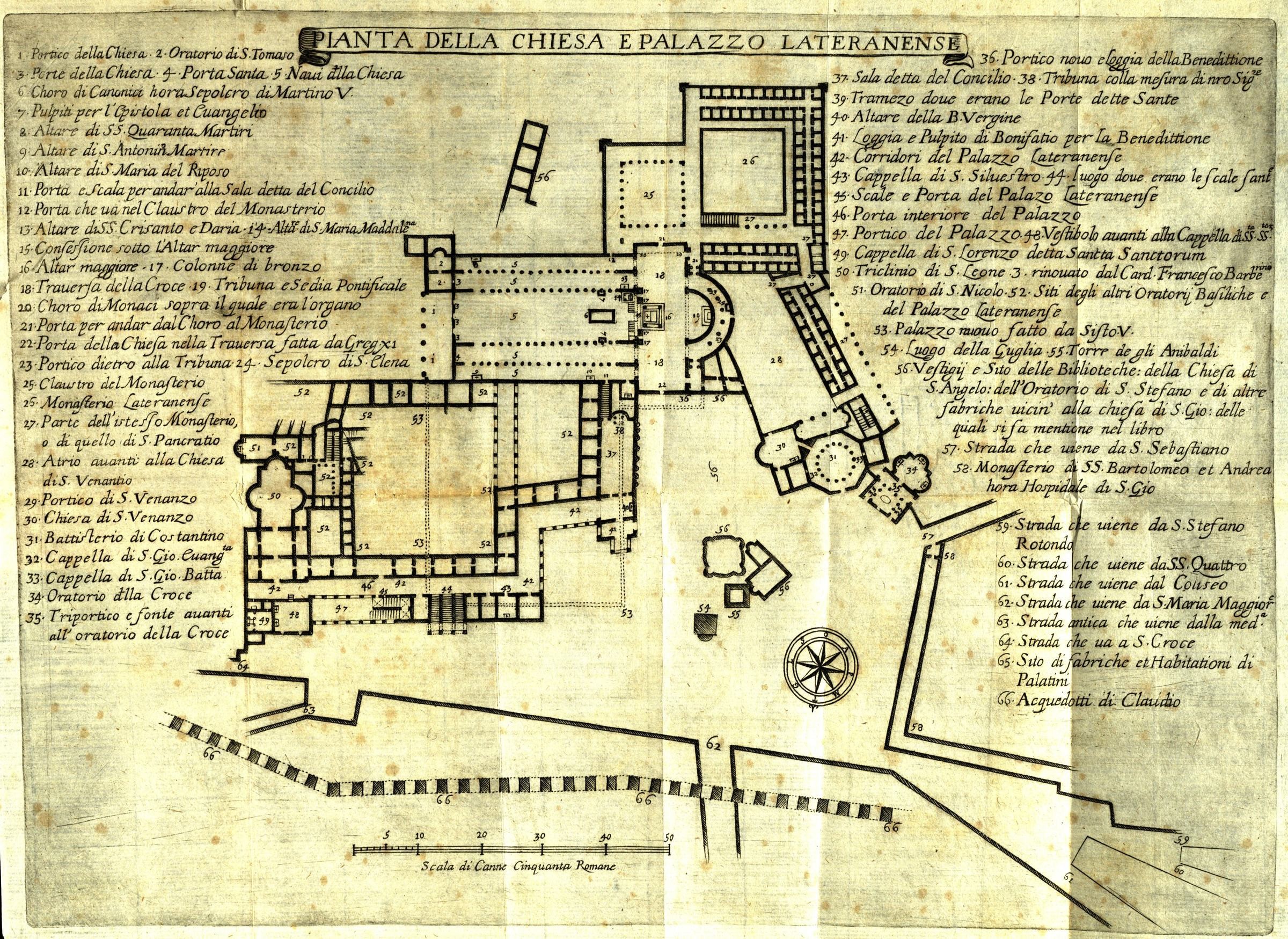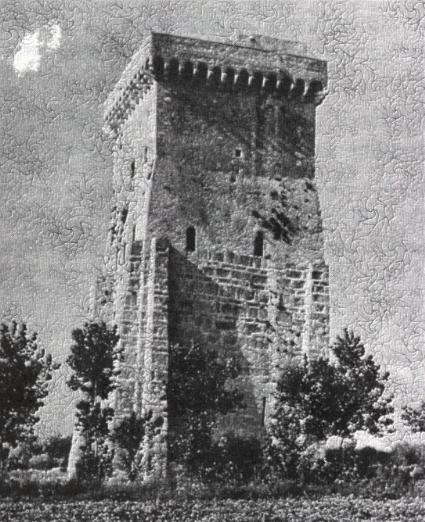|
Boniface VII
Antipope Boniface VII (died 20 July 985), otherwise known as Franco Ferrucci, was a Catholic prelate who claimed the Holy See in 974 and from 984 until 985. A popular tumult compelled him to flee to Constantinople in 974; he carried off a vast treasure, and returned in 984 and removed Pope John XIV (983–984) from office. He is supposed to have put Pope Benedict VI to death. After a brief second rule, he died under suspicious circumstances. He is today considered an antipope. Early life Originally named Franco, he was the son of Ferrucius.Oestereich, Thomas. "Boniface VII (Antipope)." The Catholic Encyclopedia Vol. 2. New York: Robert Appleton Company, 1907. 25 January 2016 He was born in Italy in the late 920s or early 930s AD, although the exact date is not known. Since his sur ... [...More Info...] [...Related Items...] OR: [Wikipedia] [Google] [Baidu] |
Diocese Of Rome
The Diocese of Rome ( la, Dioecesis Urbis seu Romana; it, Diocesi di Roma) is the ecclesiastical district under the direct jurisdiction of the Pope, who is Bishop of Rome and hence the supreme pontiff and head of the worldwide Catholic Church. As the Holy See, the papacy is a sovereign entity with diplomatic relations, and civil jurisdiction over the Vatican City State located geographically within Rome. The Diocese of Rome is the metropolitan diocese of the Province of Rome, an ecclesiastical province in Italy. The first bishop of Rome was Saint Peter in the first century. The incumbent since 13 March 2013 is Pope Francis. Historically, many Rome-born men, as well as others born elsewhere on the Italian Peninsula have served as bishops of Rome. Since 1900, however, there has been only one Rome-born bishop of Rome, Pius XII (1939–1958). In addition, throughout history non-Italians have served as bishops of Rome, beginning with the first of them according to Catholic traditio ... [...More Info...] [...Related Items...] OR: [Wikipedia] [Google] [Baidu] |
Pope John XIII
Pope John XIII ( la, Ioannes XIII; died 6 September 972) was the bishop of Rome and ruler of the Papal States from 1 October 965 to his death. His pontificate was caught up in the continuing conflict between the Holy Roman emperor, Otto I, and the Roman nobility. After long and arduous negotiations, he succeeded in arranging a Byzantine marriage for Otto II, in an effort to legitimize the Ottonian claim to imperial dignity. He also established church hierarchy in Poland and Bohemia. Family and early career Born in Rome, John was the son of another John, who was a bishop. It has been conjectured that his father was the Roman noble John Crescentius, a member of the Crescentii family who had married into the family of Count Theophylact I of Tusculum. If so, his father had previously been a duke, and possibly even appointed consul, prior to his ordination as bishop.Mann, pg. 286 Consequently, John was probably the brother of Crescentius the Elder (the ''Patrician (post-Roman Europe), ... [...More Info...] [...Related Items...] OR: [Wikipedia] [Google] [Baidu] |
985 Deaths
Year 985 ( CMLXXXV) was a common year starting on Thursday (link will display the full calendar) of the Julian calendar. Events By place Europe * Summer – Henry II (the Wrangler) is restored as duke of Bavaria by Empress Theophanu and her mother-in-law Adelaide at an ''Hoftag'' assembly in Rohr (Thuringia). King Otto III (5-years old) remains under the regency of the two empresses in the Holy Roman Empire and in the Kingdom of Italy. * Battle of Fýrisvellir: King Eric the Victorious defeats a Swedish Viking army under Styrbjörn the Strong (his nephew) near Uppsala. * July 6 – The city of Barcelona is sacked by Moorish troops under Al-Mansur, the ''de facto'' ruler of Al-Andalus (modern-day Spain). England * Lady Wulfrun, an Anglo-Saxon Nobility, noblewoman, is granted land by King Æthelred the Unready, Æthelred II (the Unready). She founds ''Heantune'' that later becomes the city of Wolverhampton in the West Midlands (county), West Midlands. Asia ... [...More Info...] [...Related Items...] OR: [Wikipedia] [Google] [Baidu] |
Year Of Birth Unknown
A year or annus is the orbital period of a planetary body, for example, the Earth, moving in its orbit around the Sun. Due to the Earth's axial tilt, the course of a year sees the passing of the seasons, marked by change in weather, the hours of daylight, and, consequently, vegetation and soil fertility. In temperate and subpolar regions around the planet, four seasons are generally recognized: spring, summer, autumn and winter. In tropical and subtropical regions, several geographical sectors do not present defined seasons; but in the seasonal tropics, the annual wet and dry seasons are recognized and tracked. A calendar year is an approximation of the number of days of the Earth's orbital period, as counted in a given calendar. The Gregorian calendar, or modern calendar, presents its calendar year to be either a common year of 365 days or a leap year of 366 days, as do the Julian calendars. For the Gregorian calendar, the average length of the calendar year ( ... [...More Info...] [...Related Items...] OR: [Wikipedia] [Google] [Baidu] |
Papal Selection Before 1059
The selection of the pope, the bishop of Rome and supreme pontiff of the Roman Catholic Church, prior to the promulgation of '' In nomine Domini'' in 1059 varied throughout history. Popes were often appointed by their predecessors or by political rulers. While some kind of election often characterized the procedure, an election that included meaningful participation of the laity was rare, especially as the popes' claims to temporal power solidified into the Papal States. The practice of papal appointment during this period would later result in the ''jus exclusivae'', i.e., a right to veto the selection that Catholic monarchs exercised into the twentieth century. The absence of an institutionalized procedure of papal succession facilitated religious schism, and the Catholic Church currently regards several papal claimants before 1059 as antipopes. Further, the frequent requirement of political approval of elected popes significantly lengthened periods of ''sede vacante'', i.e., tr ... [...More Info...] [...Related Items...] OR: [Wikipedia] [Google] [Baidu] |
Christian Burial
A Christian burial is the burial of a deceased person with specifically Christian rites; typically, in consecrated ground. Until recent times Christians generally objected to cremation because it interfered with the concept of the resurrection of a corpse, and practiced inhumation almost exclusively. Today this opposition has all but vanished among Protestants and Catholics alike, and this is rapidly becoming more common, although Eastern Orthodox Churches still mostly forbid cremation. History and antecedents of Christian burial rites Early historical evidence The Greeks and Romans practiced both burial and cremation, with Roman funerary practices distinctly favoring cremation by the time Christianity arose during the Principate. However, the Jews only ever buried their dead. Even God himself is depicted in the Torah as performing burial: "And odburied him (Moses) in the depression in the land of Moab, opposite Beth Peor. No man knows the place that he was buried, even to thi ... [...More Info...] [...Related Items...] OR: [Wikipedia] [Google] [Baidu] |
Lateran Palace
The Lateran Palace ( la, Palatium Lateranense), formally the Apostolic Palace of the Lateran ( la, Palatium Apostolicum Lateranense), is an ancient palace of the Roman Empire and later the main papal residence in southeast Rome. Located on St. John's Square in Lateran on the Caelian Hill, the palace is adjacent to the Archbasilica of Saint John Lateran, the cathedral church of Rome. From the fourth century, the palace was the principal residence of the popes, and continued so for about a thousand years until the Apostolic Residence ultimately moved to the Vatican. The palace is now used by the Vatican Historical Museum, which illustrates the history of the Papal States. The palace also houses the offices of the Vicariate of Rome, as well as the residential apartments of the Cardinal Vicar, the pope's delegate for the daily administration of the diocese. Until 1970, the palace was also home to the important collections of the Lateran Museum, now dispersed among other parts of the ... [...More Info...] [...Related Items...] OR: [Wikipedia] [Google] [Baidu] |
Equestrian Statue Of Marcus Aurelius
The ''Equestrian Statue of Marcus Aurelius'' (, ) is an ancient Roman equestrian statue on the Capitoline Hill, Rome, Italy. It is made of bronze and stands 4.24 m (13.9 ft) tall. Although the emperor is mounted, it exhibits many similarities to standing statues of Augustus. The original is on display in the Capitoline Museums, with the one now standing in the open air of the Piazza del Campidoglio being a replica made in 1981 when the original was taken down for restoration. Description The overall theme is one of power and divine grandeur—the emperor is over life-size and extends his hand in a gesture of adlocutio used by emperors when addressing their troops. Some historians assert that a conquered enemy was originally part of the sculpture (based on accounts from medieval times, including the ''Mirabilia Urbis Romae'', that suggest a small figure of a bound barbarian chieftain once cowered underneath the horse's front right leg). Such an image was meant to portray t ... [...More Info...] [...Related Items...] OR: [Wikipedia] [Google] [Baidu] |
Pandulf Ironhead
Pandulf I Ironhead (died March 981) was the Prince of Benevento and Capua from 943 (or 944) until his death. He was made Duke of Spoleto and Camerino in 967 and succeeded as Prince of Salerno in 977 or 978. He was an important nobleman in the fight with the Byzantines and Saracens for control of the Mezzogiorno in the centuries after the collapse of Lombard and Carolingian authority on the Italian Peninsula. He established himself over almost the whole of the southern half of Italia before his death in March 981. His mother was Yvantia. He co-reigned with his father, Landulf II, from 943, when his grandfather Landulf I died, and with his brother Landulf III from 959. Sometime about 955, Pope John XII led an army of Romans, Tuscans, and Spoletans against Landulf II and Pandulf, but Gisulf I of Salerno came to their rescue and no battle was given. The pope and Gisulf made a treaty at Terracina. Gisulf and Pandulf had a strong alliance after that. In 961, Landulf II died an ... [...More Info...] [...Related Items...] OR: [Wikipedia] [Google] [Baidu] |
Byzantine
The Byzantine Empire, also referred to as the Eastern Roman Empire or Byzantium, was the continuation of the Roman Empire primarily in its eastern provinces during Late Antiquity and the Middle Ages, when its capital city was Constantinople. It survived the fragmentation and fall of the Western Roman Empire in the 5th century AD and continued to exist for an additional thousand years until the fall of Constantinople to the Ottoman Empire in 1453. During most of its existence, the empire remained the most powerful economic, cultural, and military force in Europe. The terms "Byzantine Empire" and "Eastern Roman Empire" were coined after the end of the realm; its citizens continued to refer to their empire as the Roman Empire, and to themselves as Romans—a term which Greeks continued to use for themselves into Ottoman times. Although the Roman state continued and its traditions were maintained, modern historians prefer to differentiate the Byzantine Empire from Ancient Rome a ... [...More Info...] [...Related Items...] OR: [Wikipedia] [Google] [Baidu] |
Vatican Basilica
The Papal Basilica of Saint Peter in the Vatican ( it, Basilica Papale di San Pietro in Vaticano), or simply Saint Peter's Basilica ( la, Basilica Sancti Petri), is a church built in the Renaissance style located in Vatican City, the papal enclave that is within the city of Rome, Italy. It was initially planned by Pope Nicholas V and then Pope Julius II to replace the aging Old St. Peter's Basilica, which was built in the fourth century by Roman emperor Constantine the Great. Construction of the present basilica began on 18 April 1506 and was completed on 18 November 1626. Designed principally by Donato Bramante, Michelangelo, Carlo Maderno and Gian Lorenzo Bernini, St. Peter's is the most renowned work of Renaissance architecture and the largest church in the world by interior measure. While it is neither the mother church of the Catholic Church nor the cathedral of the Diocese of Rome (these equivalent titles being held by the Archbasilica of Saint John Lat ... [...More Info...] [...Related Items...] OR: [Wikipedia] [Google] [Baidu] |
Spoleto
Spoleto (, also , , ; la, Spoletum) is an ancient city in the Italian province of Perugia in east-central Umbria on a foothill of the Apennines. It is S. of Trevi, N. of Terni, SE of Perugia; SE of Florence; and N of Rome. History Spoleto was situated on the eastern branch of the Via Flaminia, which forked into two roads at Narni and rejoined at ''Forum Flaminii'', near Foligno. An ancient road also ran hence to Nursia. The ''Ponte Sanguinario'' of the 1st century BC still exists. The Forum lies under today's marketplace. Located at the head of a large, broad valley, surrounded by mountains, Spoleto has long occupied a strategic geographical position. It appears to have been an important town to the original Umbri tribes, who built walls around their settlement in the 5th century BC, some of which are visible today. The first historical mention of ''Spoletium'' is the notice of the foundation of a colony there in 241 BC; and it was still, according to Cicero ''colonia ... [...More Info...] [...Related Items...] OR: [Wikipedia] [Google] [Baidu] |
.png)







